
Meet our marvellous monkeys!
December 14 is Monkey Day, so what better time to meet the different species of monkey we have here at Newquay Zoo!
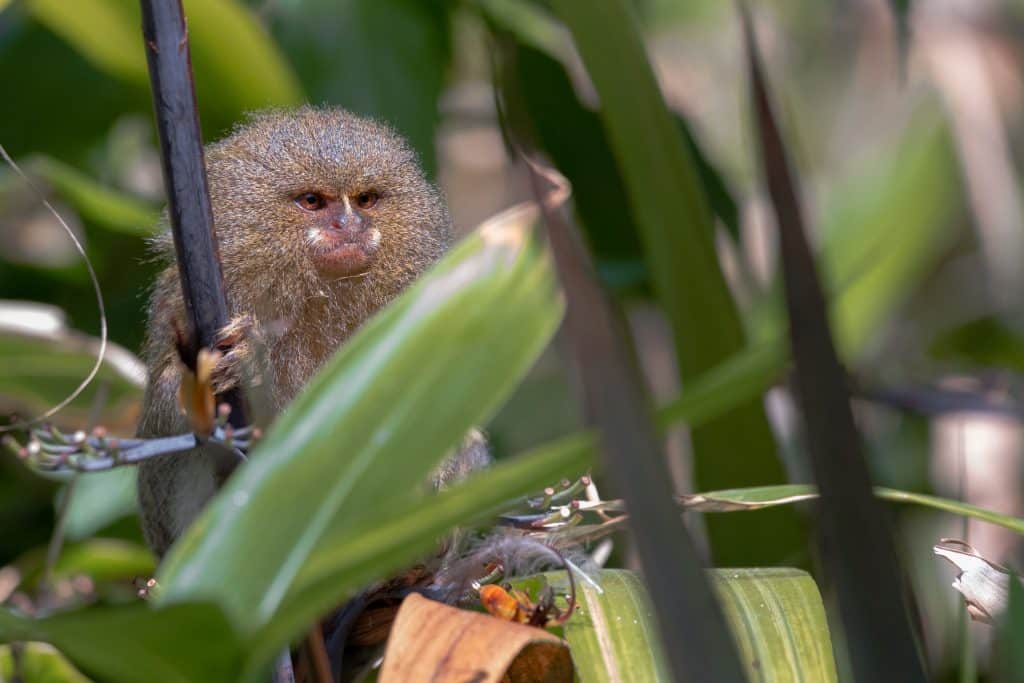
Pygmy marmoset
Pygmy marmosets are the smallest of all monkey species. They are usually between 12 and 15cm tall, and weigh as little as 100g! Despite their small size, they can jump a staggering 5 metres between branches.
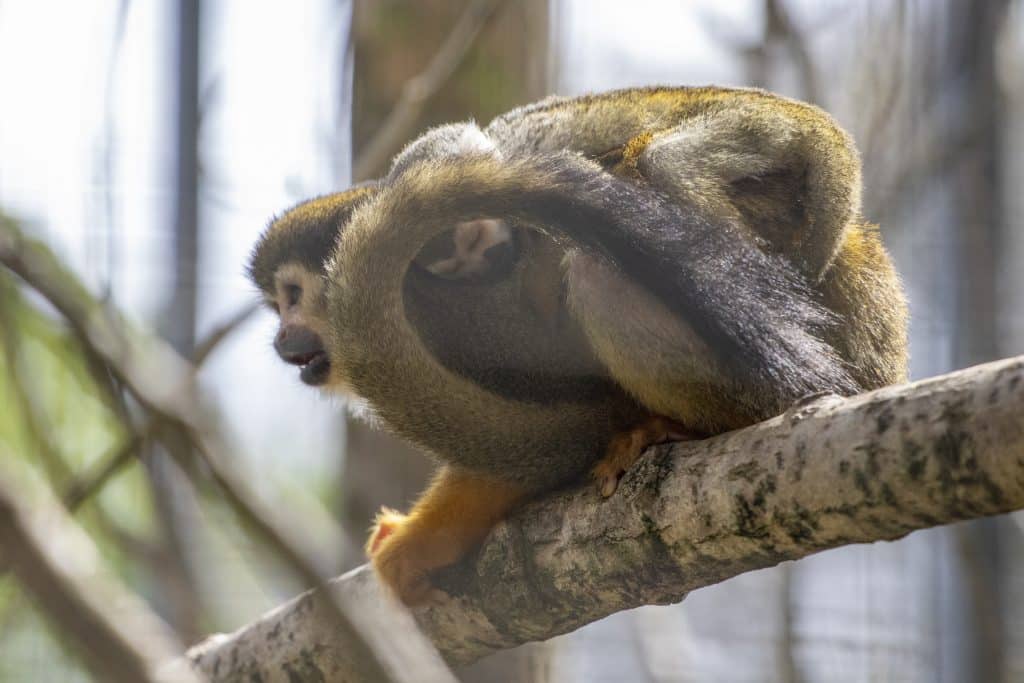
Squirrel monkeys
Squirrel monkeys have an interesting way of communicating with one another and marking their territory. They are known to spread urine on their hands and feet, so that they can leave a scent trail whilst moving about in the trees!
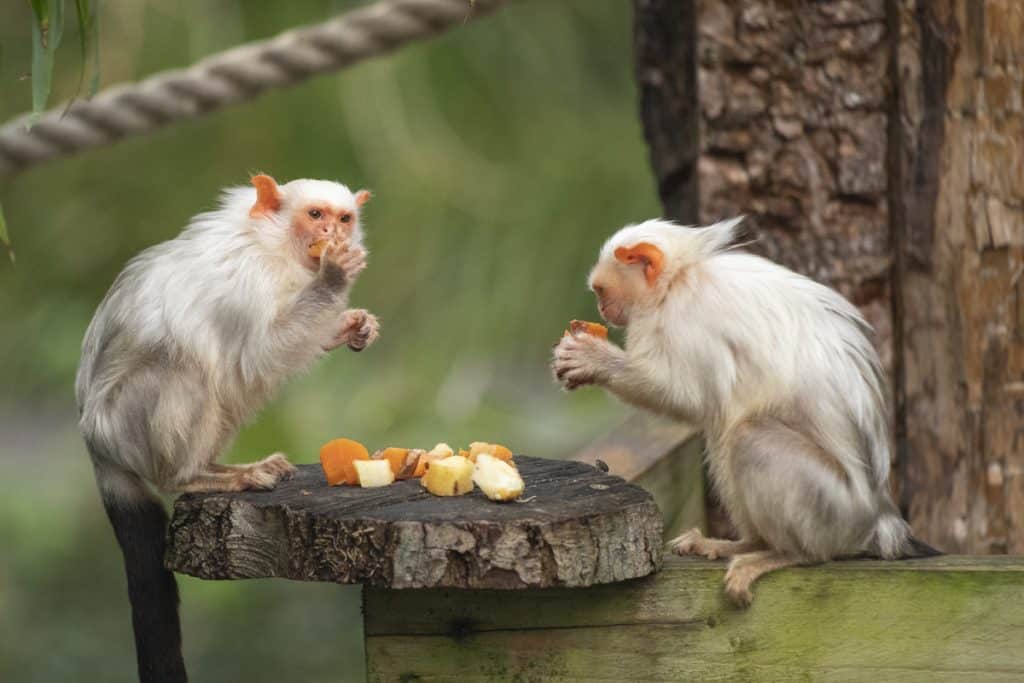
Silvery marmosets
Silvery marmosets are gumivorous animals. This means that they primarily consume the sap and gum of trees, though they will also eat leaves, insects and fruit (as you can see from this picture!)
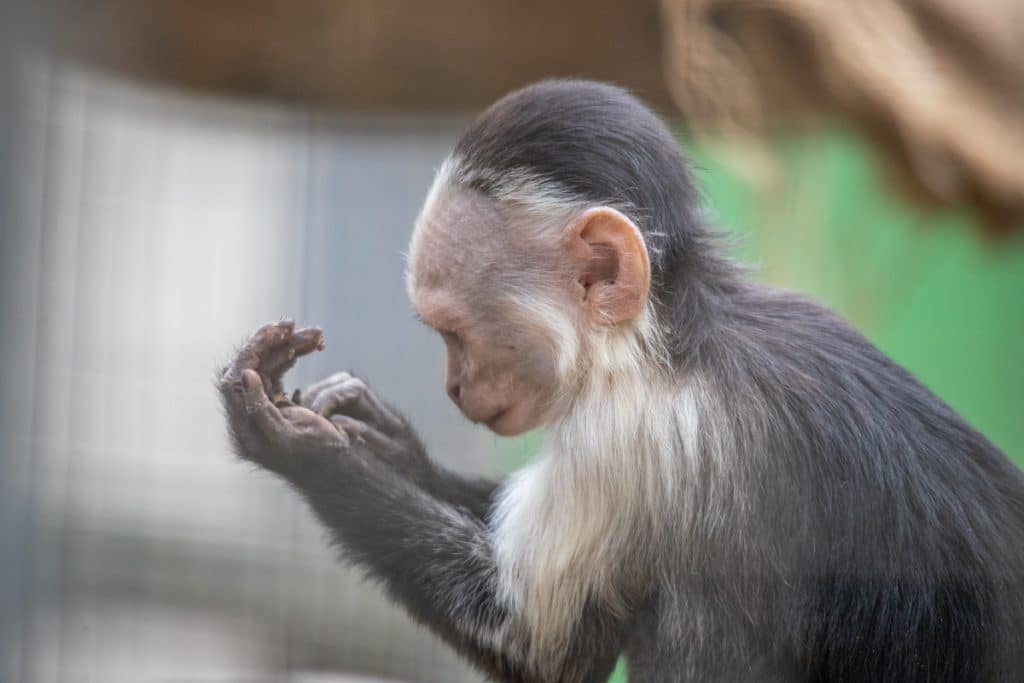
White throated capuchins
Capuchins are among the most intelligent of New World monkeys. In addition to their ability to fashion tools for foraging, they have been known to use sticks as weapons against snakes!
New World v. Old World
- Monkeys can divided into two broad categories of Old World and New World monkeys
- ‘Old World’ refers to species found in Africa and Asia, while ‘New World’ refers to those found in Central and South America
- Old World monkeys tend to be larger than New World monkeys
- New World monkeys usually spend all of their time living in trees, while Old World monkeys can also be found spending time on the ground
- Old World monkeys have narrower nostrils than New World monkeys, and they also have cheek pouches too
- Old World monkeys see in black and white, while New World monkeys see in colour, just like us!
- All of the monkeys here at Newquay Zoo are considered to be New World monkeys
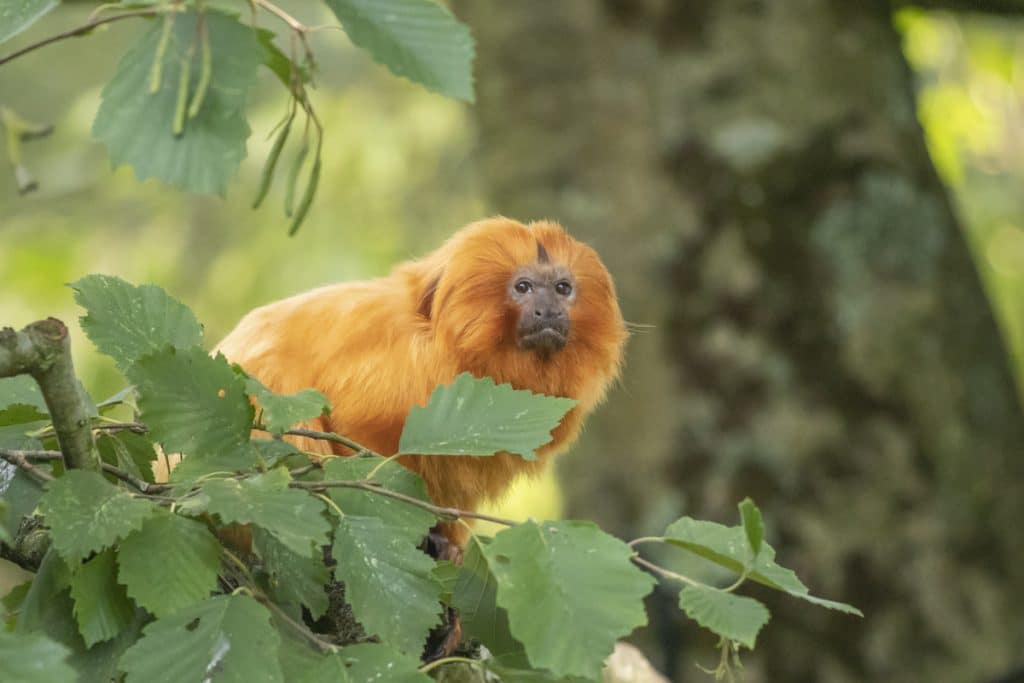
Golden lion tamarins
Golden lion tamarins are very social, friendly and playful animals. They can often be observed huddling and playing together. Wrestling and chasing are among other important activities.
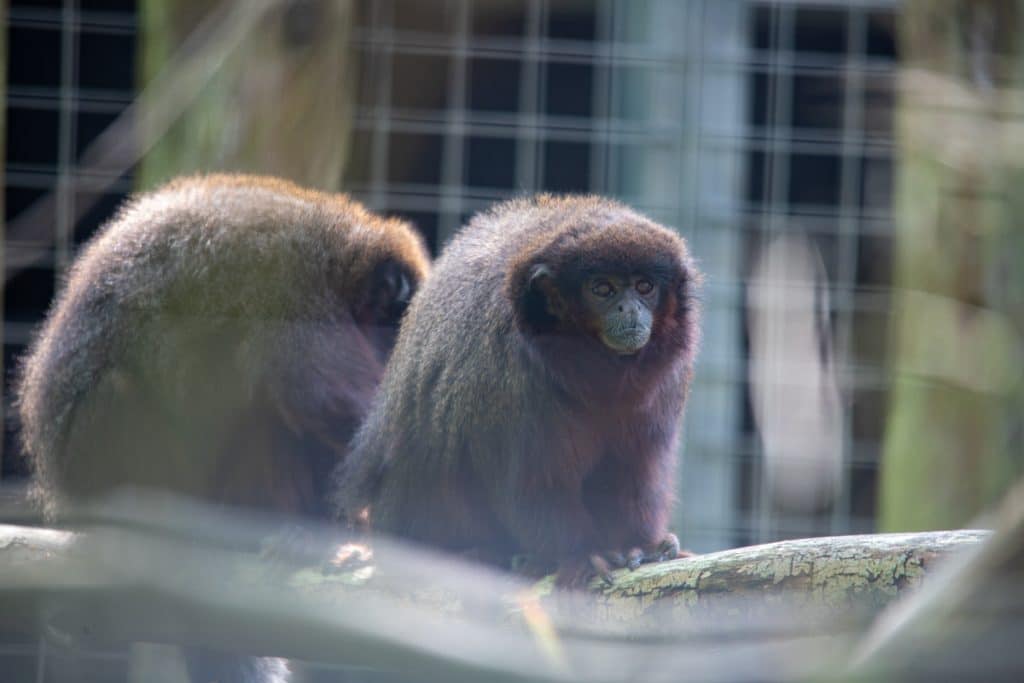
Coppery titi monkeys
Coppery titi monkeys practice tail entwining, which is when two individuals wrap their tails around each other’s, both during the day and while sleeping. They do this to reinforce bonds and to balance one another.
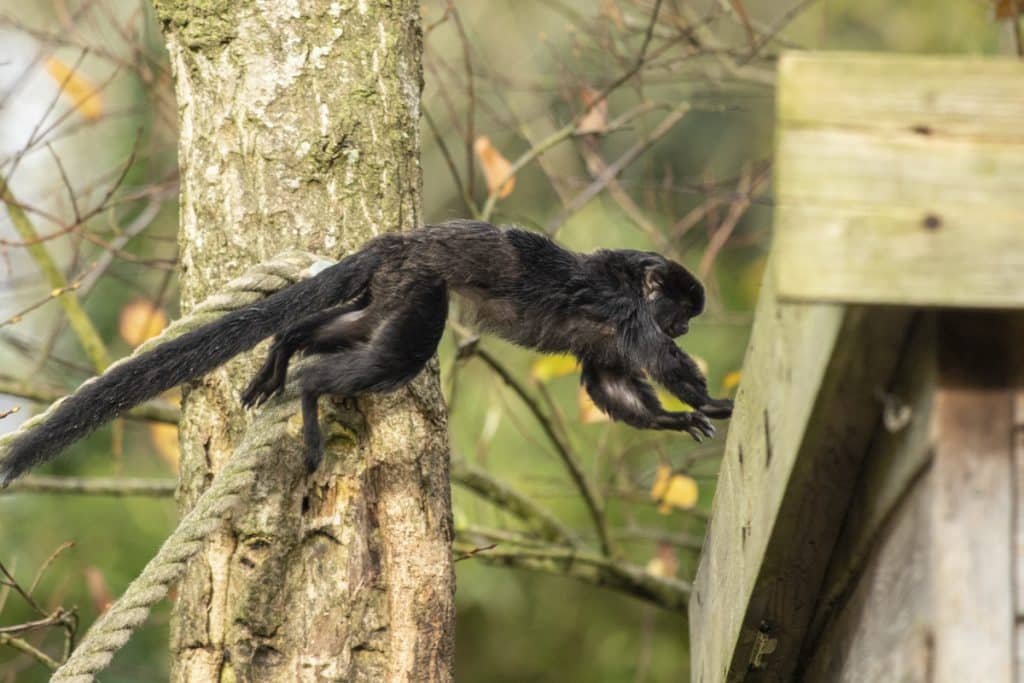
Goeldi’s monkeys
Goeldi’s monkeys can be found in the upper Amazon Basin regions of Bolivia, Brazil, Columbia, Ecuador and Peru. They are the only primates that have been observed eating mushrooms as a substantial part of their diet!
Which one is your favourite?
We think all of our monkeys are equally amazing, but do you have a favourite? Head over to our social media to tell us what you think:


